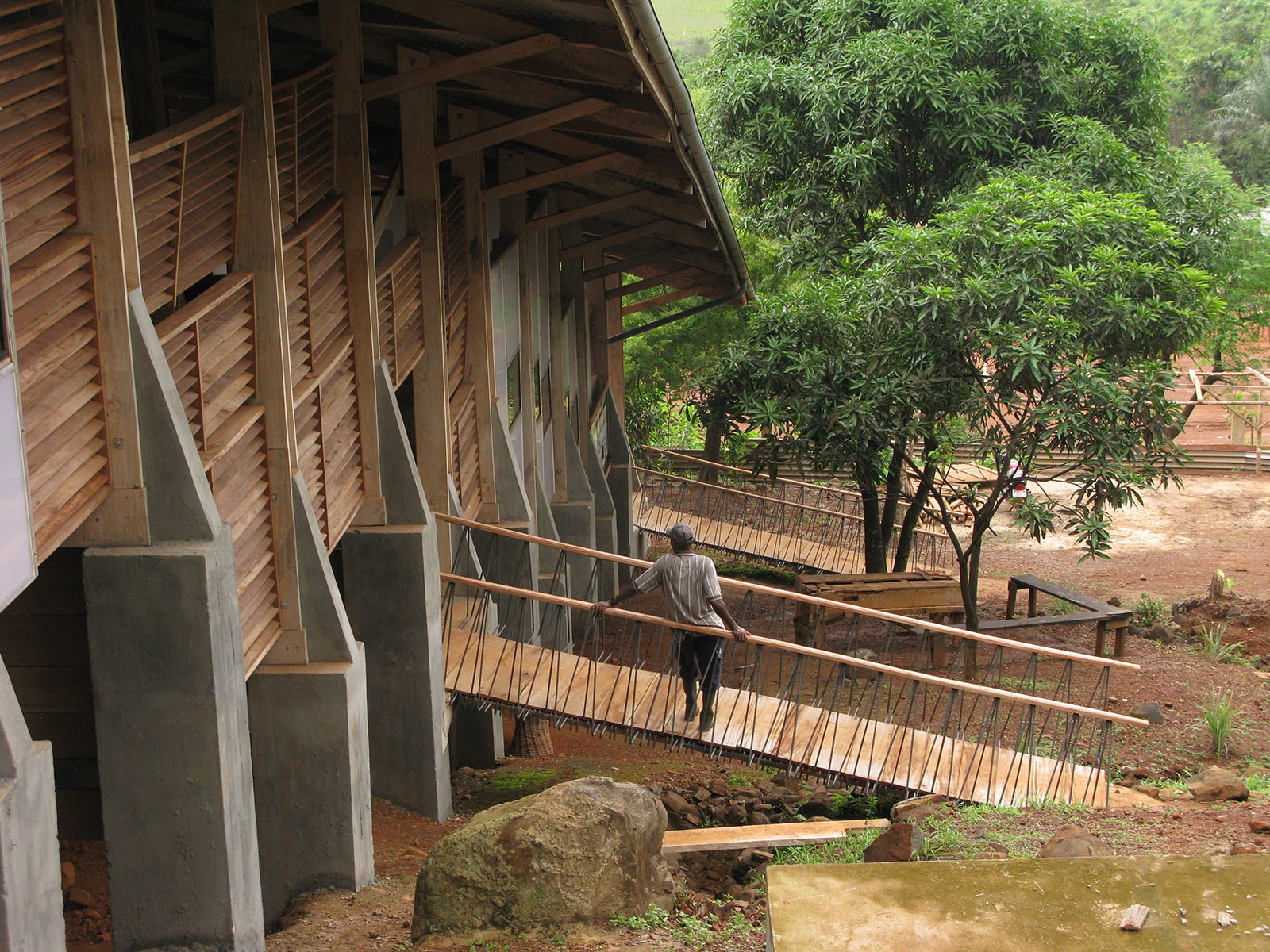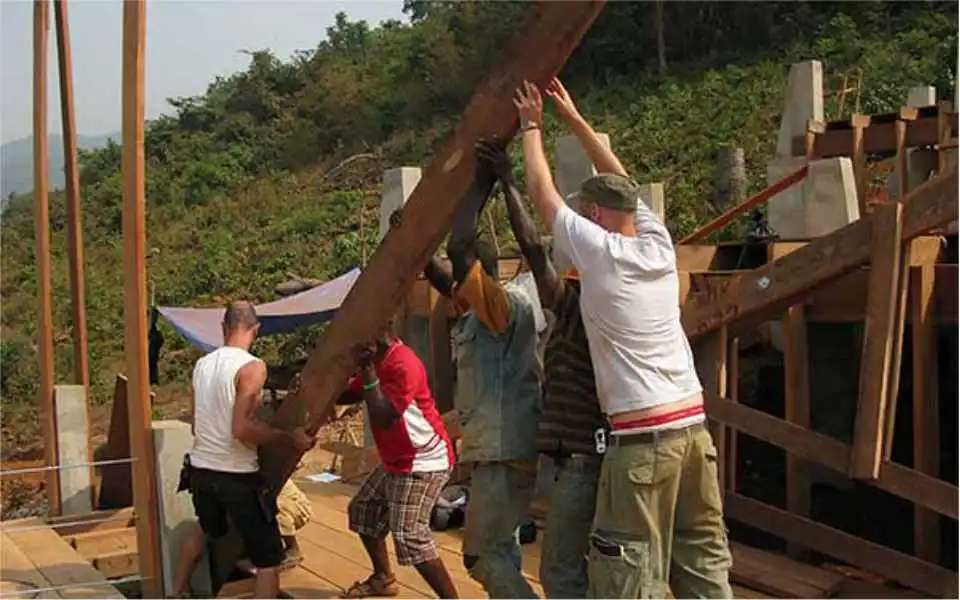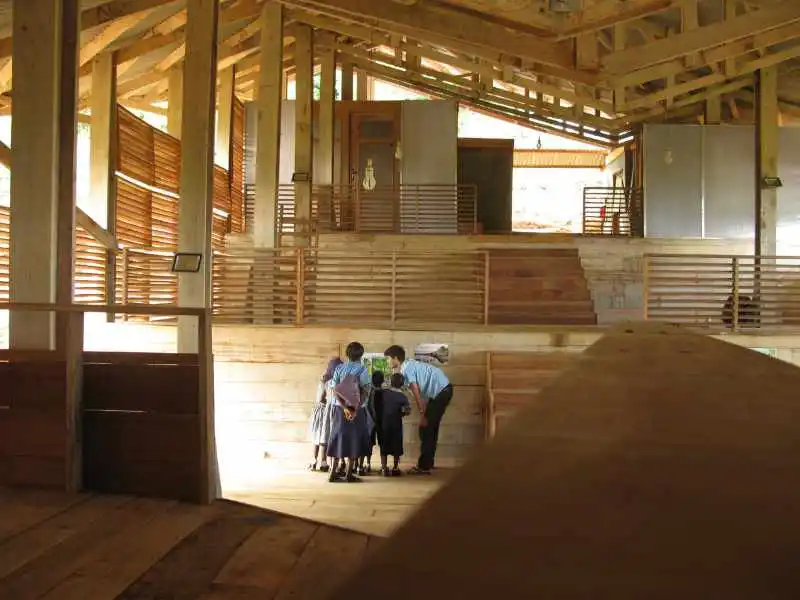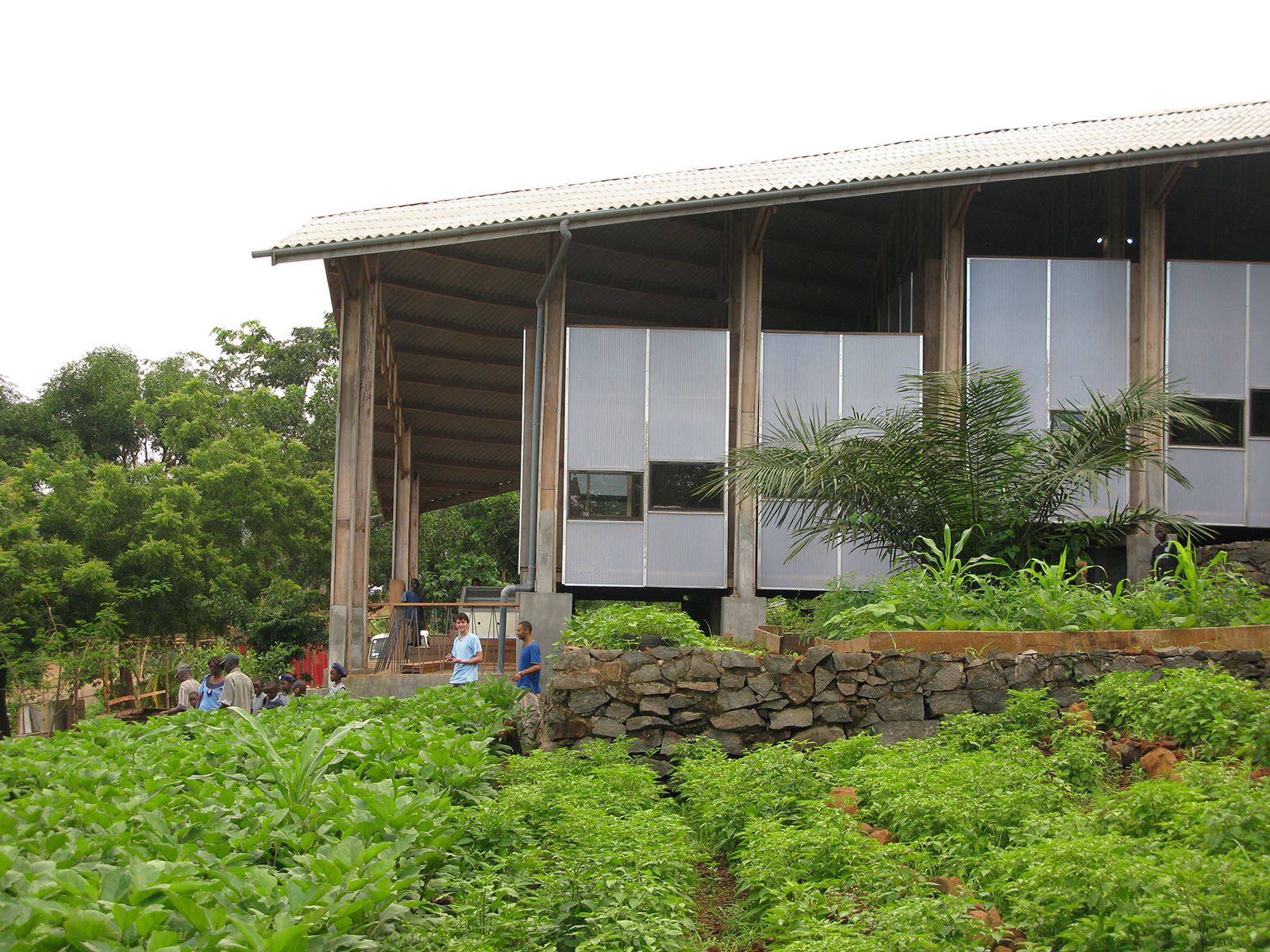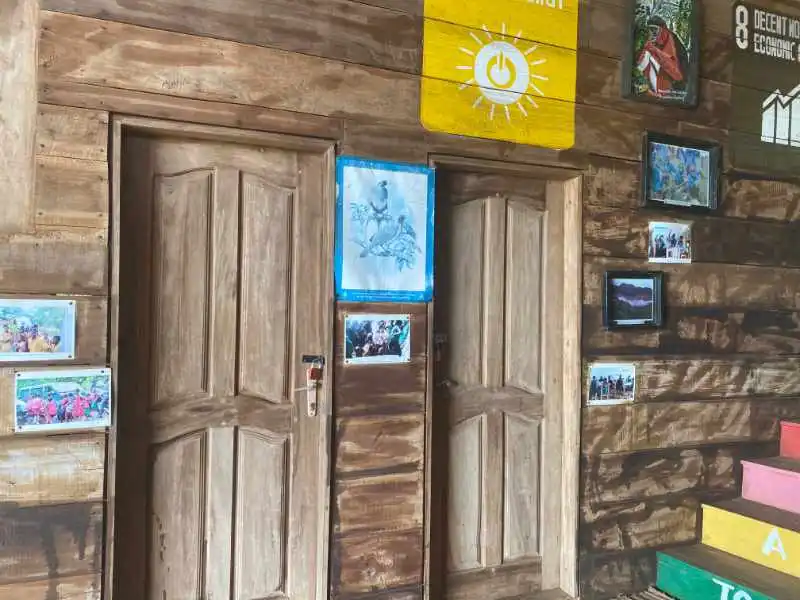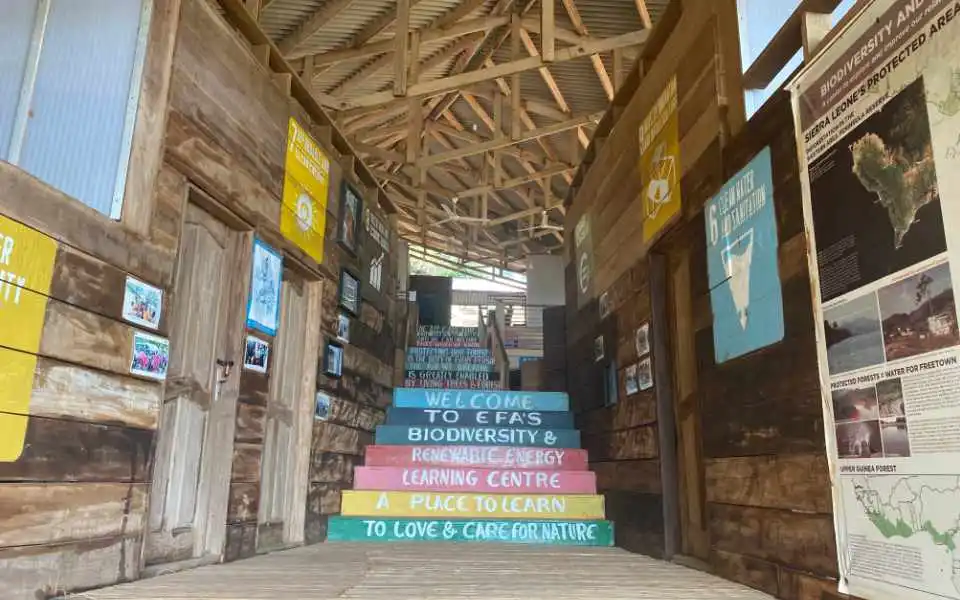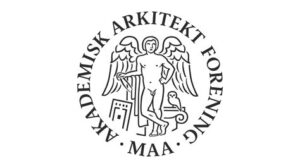Project info
- Location: Sierra Leone
- Year: 2009 - 2014
- Client: Environmental Foundation for Africa
- Size: 700 m2
- Collaborators: Environmental Foundation for Africa
- Financing: Statens Kunstfond, Cembrit.
- Project team: Patrick Kogler, Camilla Kragh, Rasmus Hamann, Kym Lansell.
- Contact: [email protected]
The Bio Learning Centre is a learning facility for environmental issues, sustainable agriculture, and energy. The building is constructed for the Environmental Foundation for Africa (EFA). Utilizing the building as a framework for questions related to environmental matters, the EFA today facilitates various courses and learning activities centering the vast environmental challenges that Sierra Leone faces.
Located in a scenic, rolling landscape on the edge of three important ecosystems: the rainforest, the mangrove, and the beach, the Bio Learning Centre rests on a pillar foundation that enables the reduction of cement, thus minimizing its environmental footprint. The building encompasses built-in waterless VIP toilets that produce fertilizer for agricultural use. Furthermore, it makes extensive use of natural ventilation as an alternative to resource-guzzling air conditioning. The building furthermore has an embedded exhibition space for showcasing simple, yet practical solutions for sustainable farming practices, forestry, and energy.
DEVELOPMENT TARGETS
- The center’s main program is a learning facility used for general information to school classes, students and local community.
- With its multi-purpose hall built to accommodate 150 visitors, the building will serve as a gathering space for environmental organizations in West Africa to strengthen the region’s collective environmental efforts.
- As a new visual landmark in the landscape outside of Freetown, the building emphasizes the importance of the struggle for environmental protection and raises awareness of the presence of environmental organizations in West Africa.
- The building should serve as an example of how modern and traditional construction techniques can coexist in a functional, yet sustainable building.
The project is furthermore featured in our publication titled Developing Architecture – Learning From Sierra Leone. In 2014, the publication was awarded the Danish architectural prize ‘Lille Arne’ for its contribution to emphasizing the role of architecture in humanitarian work.


